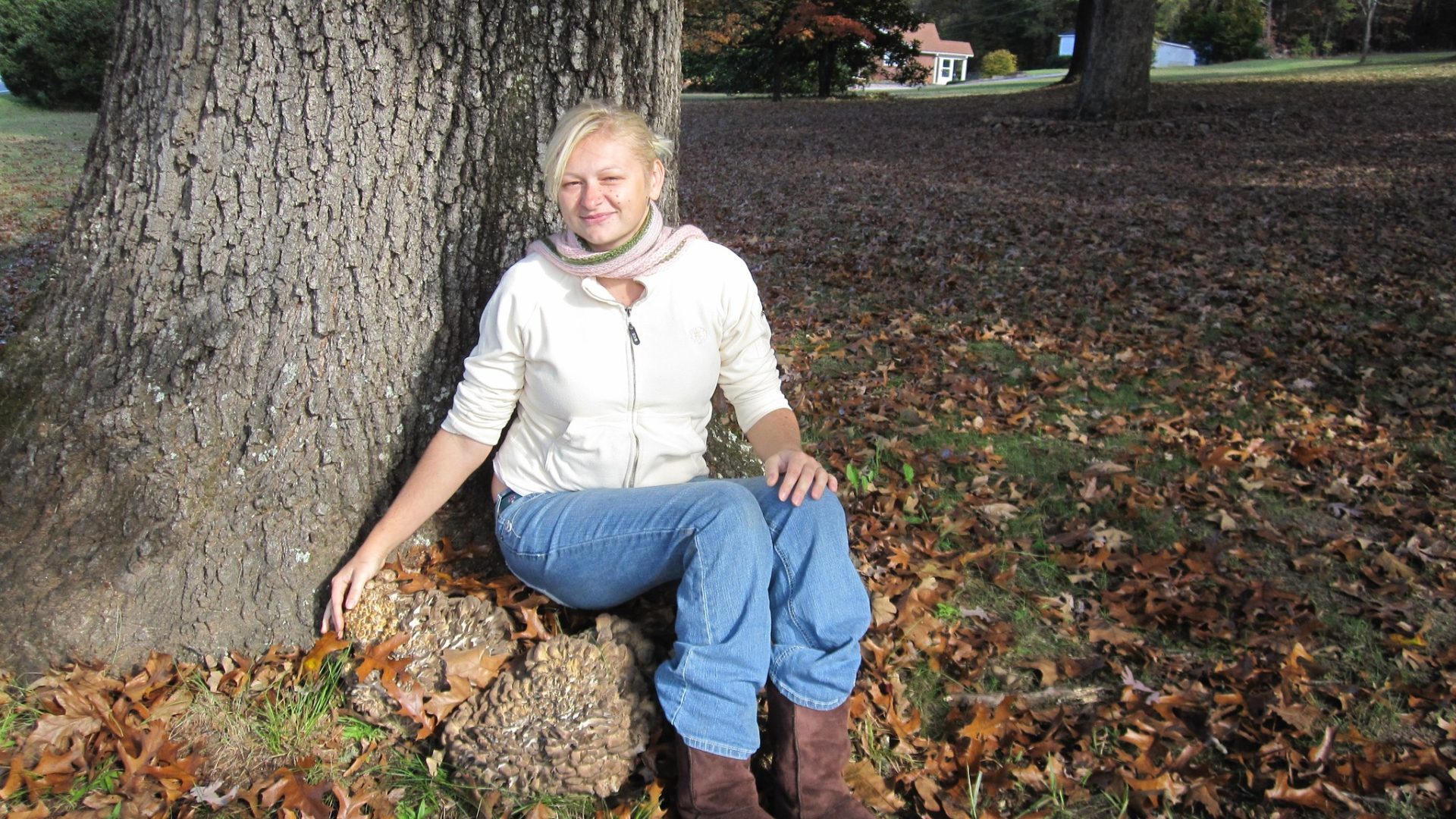by Jennifer Sparks
Updated by Angie Lavezzo, CFSA Communications Coordinator, Thursday, Feb. 9, 2023
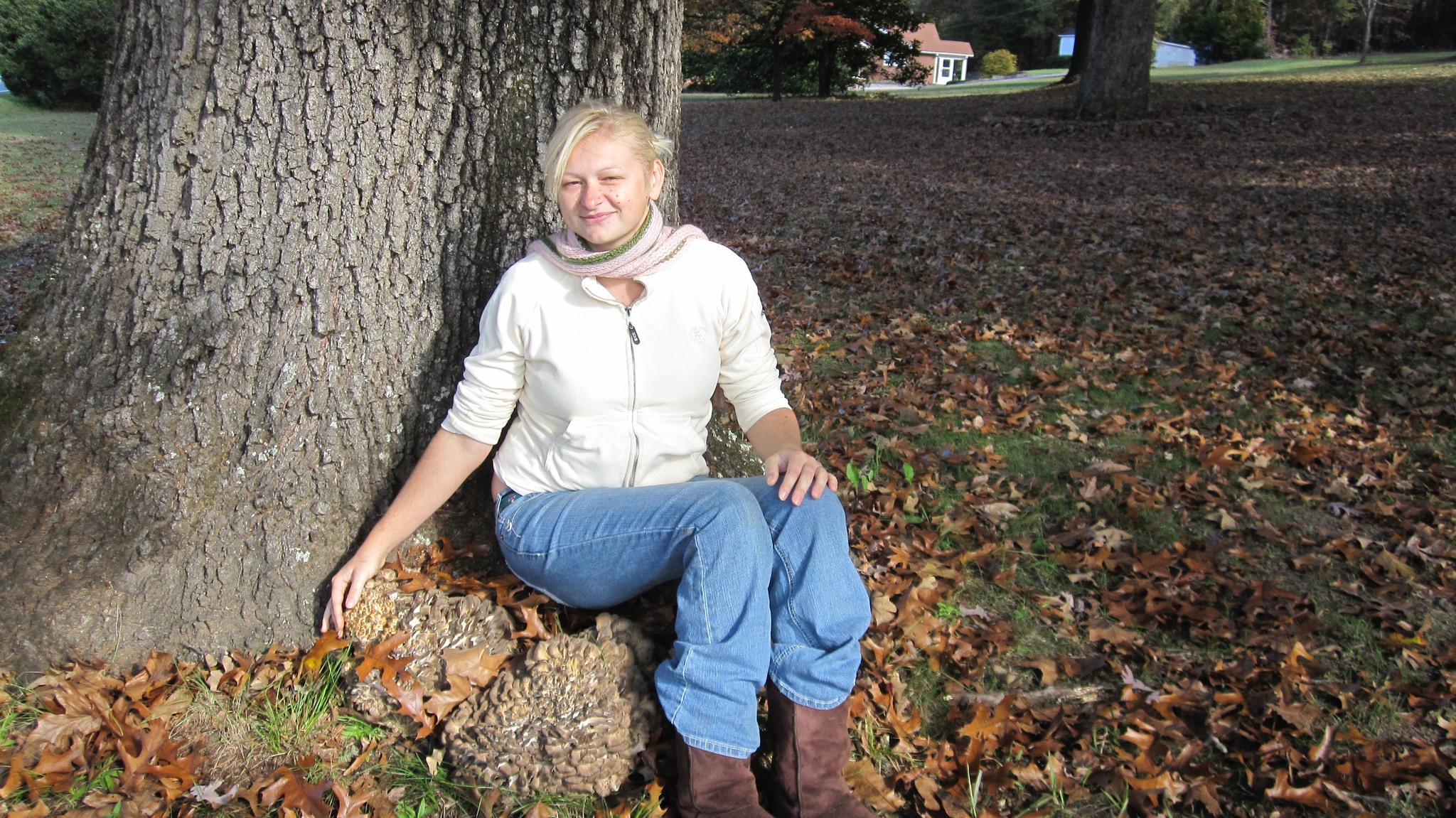
Tucked away just a short distance off Highway 123 in Liberty, South Carolina, a local mushroom farm has a big story to tell. Off a small side street, it sits back from the road and is easily missed the first time, but with one quick turnaround, I found it and received a very warm welcome, both from the owners and one of the friendliest dogs on earth, appropriately named Enoki. Sitting down to a shaded picnic table with fresh cold watermelon slices and local blueberries, I was told the story behind this unique experiment that the owner/farmer believes could heal a plethora of human and environmental ills. The operation is Mushroom Mountain, and the owner is Olga Katic. Olga has spent the last 15 years building up his farm on its current site. The property includes “the world’s first interpretive mushroom farm,” complete with walking trails, composting, and “mycogardening” demonstration areas, all of which we toured together, and she described each in promising and expert detail.
After getting a general lay of the land and an initial understanding of the purpose of each area, we were off for a walk in the woods. The first stop was the chicken house, which is an old shed retrofitted to hold a few layers, as well as a dozen or so young chicks, all happily resting in the shade on their bed of straw and fungi. This is where I started to think we’d see some form of fungi on nearly every square foot of this place, and I wasn’t far from the truth. Olga informed me how the fungi spores mixed into the bedding act as a natural composter for the chicken waste and form a wonderfully symbiotic relationship to keep the environment clean and healthy. I must admit, it’s one of only two chicken houses I’ve ever seen that had no unusual smell, so it must be working!
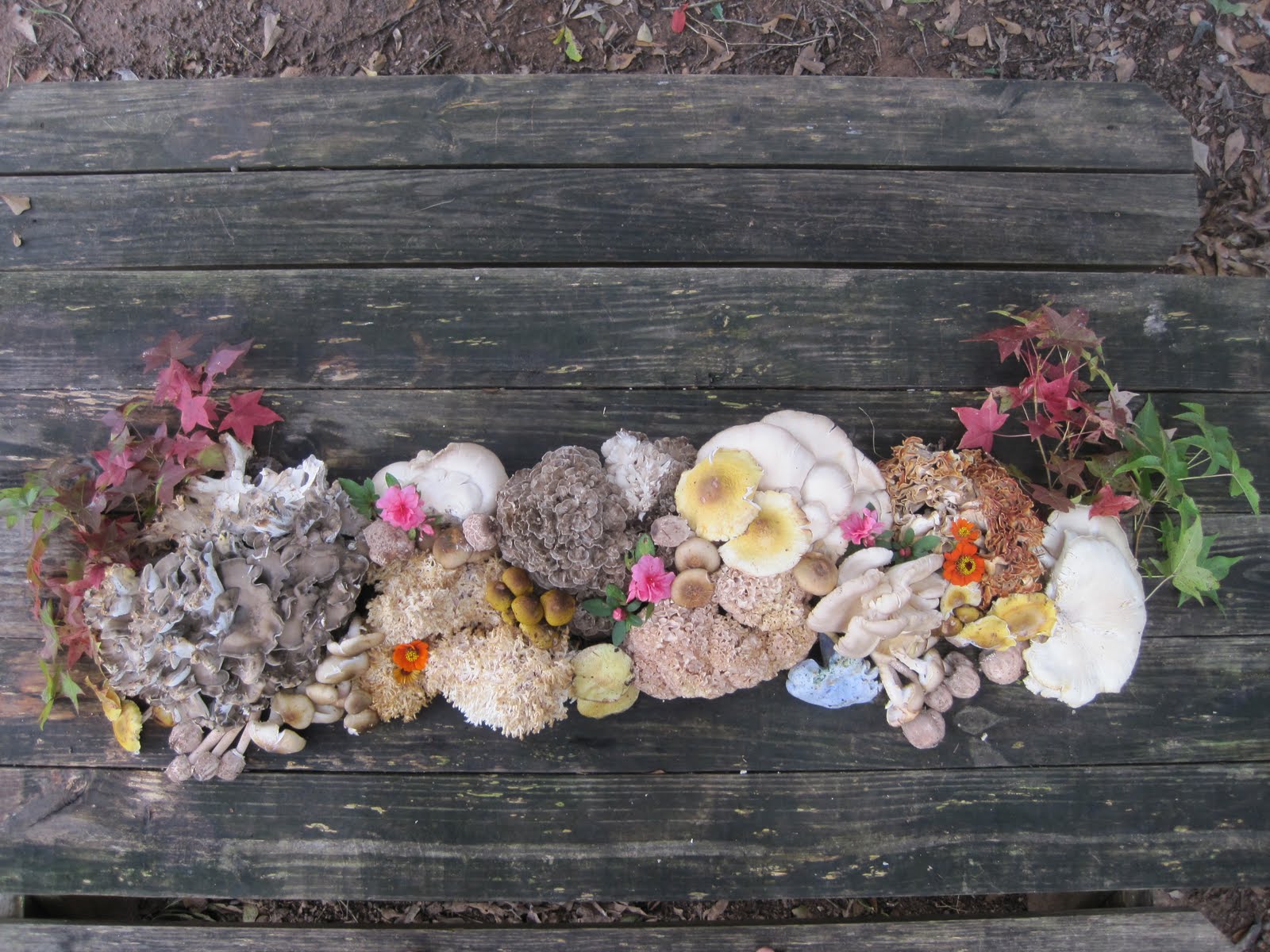
Next, we were led along a few small trails where several varieties of ‘mushroom nurseries’ grow and demonstrate a half dozen or so different cultivation methods. We saw Chicken of the Woods and King Stropharia, among other recognizable names. Despite the nearly 100° heat that day, the woods were a bit cooler and obviously provide an ideal environment for warm-weather mushrooms, just needing regular heavy watering. For this, Olga brings out an actual baby swimming pool, fills it with water, and throws the logs in to soak for 12 – 24 hours. Mushroom spawn need to breathe, so any longer would risk suffocating them.
Here’s how mushroom logs are made, give or take a few details depending on the cultivation method being used: they start with freshly cut deciduous softwoods; different mushroom varieties require specific types of wood.
- The logs are cut to the desired length, again according to the desired method, and given a good initial soak in plain water.
- Then, ¼ – ½ inch holes are drilled all around the log, evenly spaced, and then plugged with the spawn (developed in the farm’s registered, Class 1, Low Biosafety Hazard lab).
- After that, the holes are covered with wax to keep out any pests or unwanted material.
The spawn grow and feed on the log until it becomes completely ‘colonized,’ and since they need to fruit to stay alive, that’s when the mushrooms pop out. One harvest is called a ‘flush,’ and many varieties flush a couple to half a dozen times per season. The yield is partially dependent on the diameter of the log and roughly equals one year of production per 1 inch in diameter, with the optimal average being 4-5 years. If the logs start drying out, the process slows down, but only prolonged direct sunlight can kill the spawn.
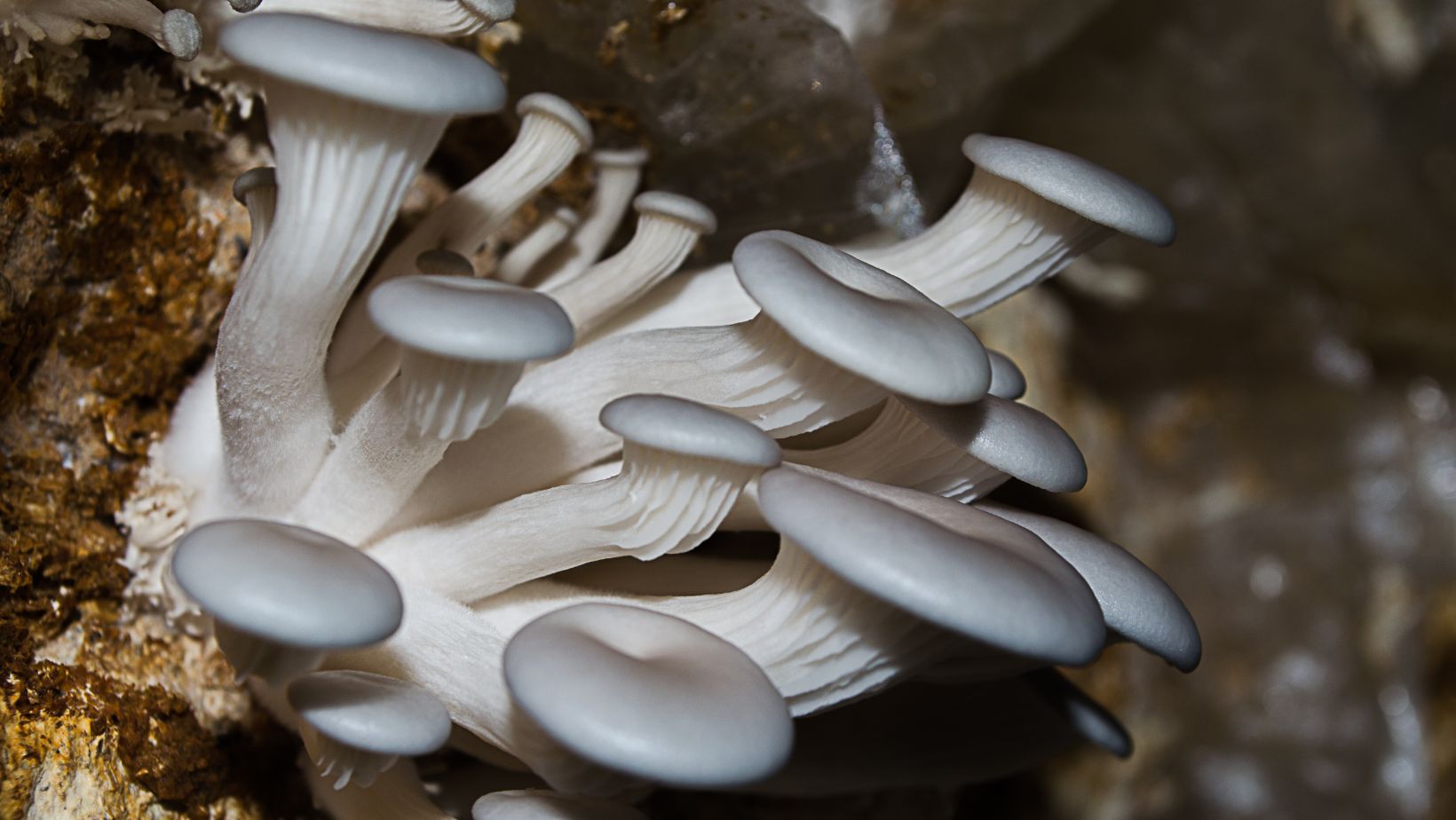
Passing by a delightfully wild garden, we made it over to one of two greenhouses kept at a comfortably cooler temperature for optimal growth of the more sensitive tropical varieties of oyster mushrooms. These fungi were growing out of buckets, 10 ft long skinny hanging bags, and smaller bags of sawdust all piled up and sitting on the floor. This is one of the farm’s sources of income. Olga sells the mushrooms to several local restaurants, including American Grocery and High Cotton in Greenville and The Blue Heron in Clemson.
After 90 minutes of learning about just some of the projects she has going on and plans to do in the future, we headed back to the picnic table. There we were presented with a couple of unexpected treats, including mushroom flour made from dried mushrooms, which I’m told is excellent as a coating for whitefish and scallops. Olga also infuses local honey with this mushroom flower, which is said to hold medicinal properties. The honey has a distinctive, woodsy, caramel-like flavor.
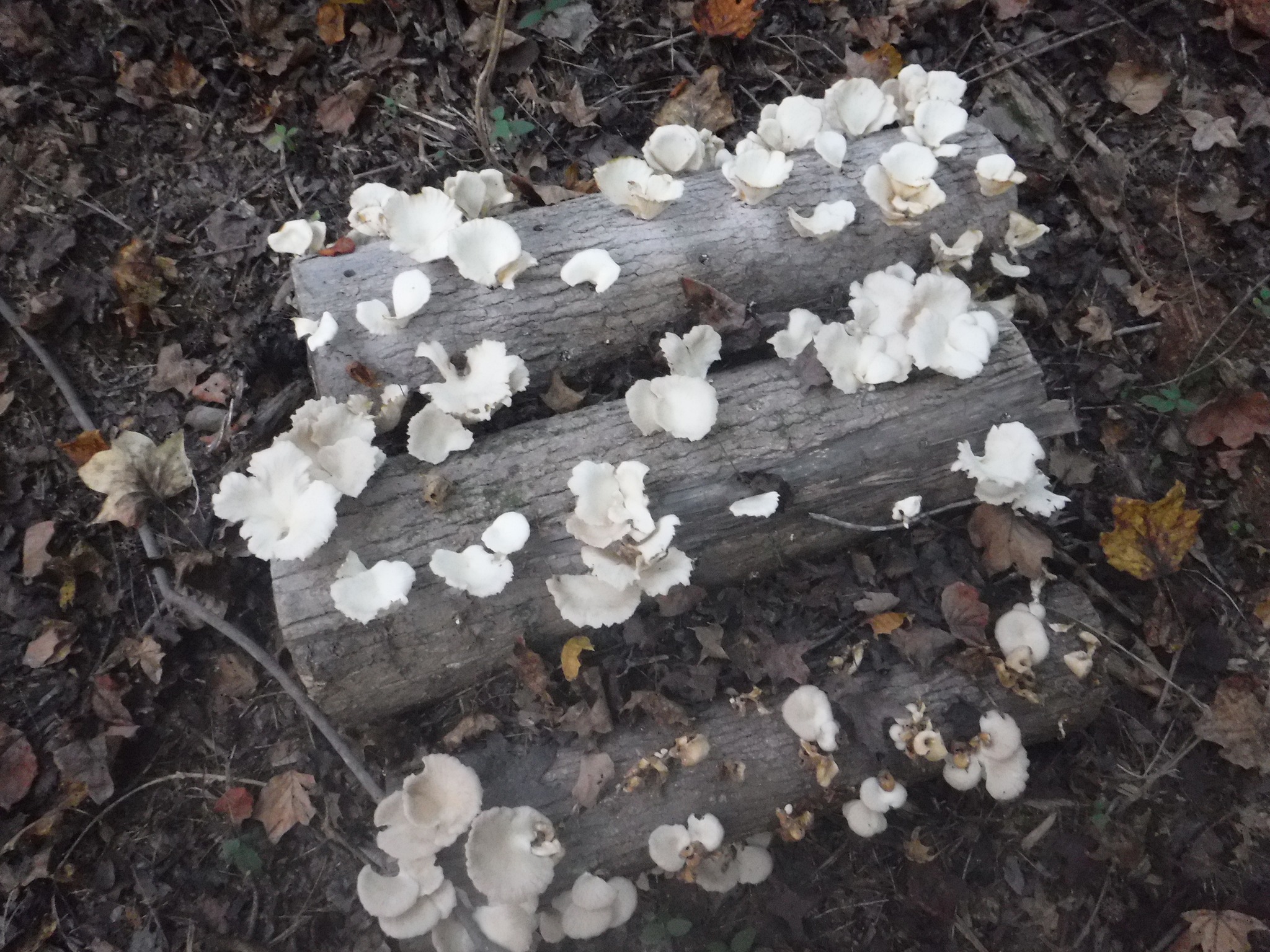
That summed up the tour, and I had to be going, but I definitely plan to keep up with what’s happening at this not-so-little mycological melange in Liberty, SC. And you should too!
Olga and the Mushroom Mountain crew provide workshops and consult numerous hobby growers and commercial farms in the Southeast. Mushroom Mountain’s laboratory has the capability to produce and supply customized spawn to growers in any quantity while ensuring optimal mushroom culture viability.
> Learn more and shop Mushroom Mountain.
That Olga sure is a fun gal! Meet more of CFSA’s members in our newsletters. Just one of the many benefits of joining CFSA!
All photos courtesy of Mushroom Mountain and Olga Katic.


